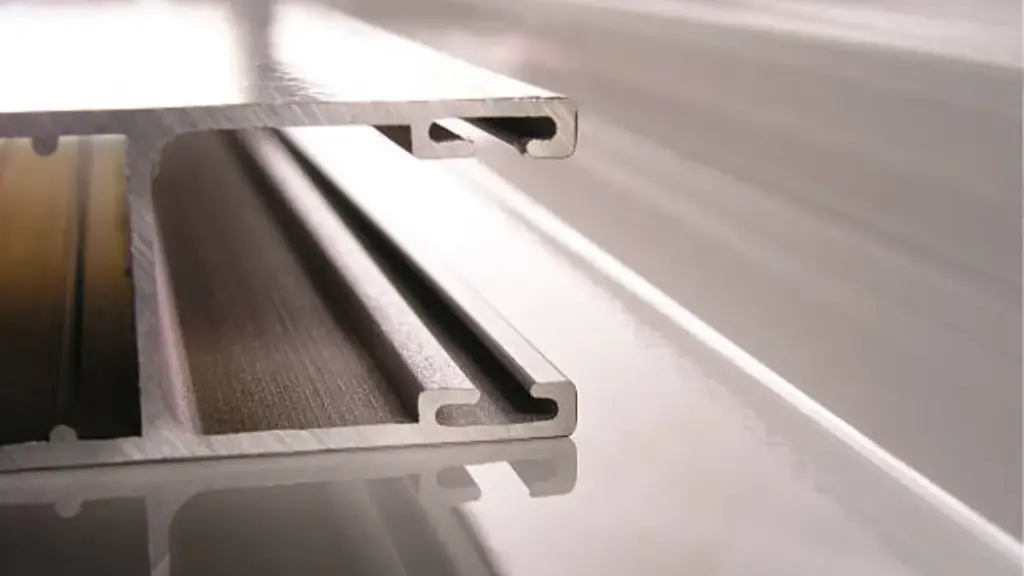Haben Sie Probleme mit inkonsistenter Qualität?, langsame Produktion, oder hohe Kosten beim Aluminiumdruckguss? Diese Probleme können den Erfolg Ihres Projekts ernsthaft beeinträchtigen.
Bian Diecast, mit über einem Jahrzehnt Erfahrung in Foshan, China, ist auf die Bewältigung dieser Herausforderungen spezialisiert. Unser hochmodernes Formendesign und unsere effizienten Produktionsmethoden sind darauf ausgelegt, die Genauigkeit zu verbessern, die Fertigung beschleunigen, und die Kosten senken.
Können wir für Sie einen Unterschied machen?? Entdecken Sie, wie Bian Diecast Ihnen bei der Lösung Ihrer Gussprobleme helfen und Ihre Projekte auf die nächste Stufe bringen kann.

Was ist Aluminium-Druckguss?
Aluminium-Druckguss ist ein Verfahren zur Herstellung von Metallteilen. Es gibt sechs Hauptschritte bei der Herstellung eines Druckgussteils oder einer Druckgusskomponente:
- Formenbau
- Casting-Vorbereitung
- Injektion
- Abkühlung und Erstarrung
- Entformen/Entfernen
- CNC-Bearbeitung/Oberflächenbehandlung
Erste, Wir bereiten eine Stahlform mit der Form des gewünschten Teils vor. Dann, Das Aluminium wird flüssig erhitzt und in die Form eingespritzt.
Wir verwenden einen hohen Einspritzdruck, um sicherzustellen, dass das Aluminium jedes Formdetail ausfüllt. Das Aluminium kühlt schnell ab und verfestigt sich in der Form.
Sobald es abgekühlt ist, Die Form wird geöffnet, und das Aluminiumteil wird entfernt. Nächste, Wir schneiden überschüssiges Aluminium ab und prüfen die Qualität des Teils.
Endlich, Bei Bedarf können zusätzliche Behandlungen wie Lackieren oder Beschichten durchgeführt werden. Dieser gesamte Prozess produziert effizient Teile mit komplexen Formen und hoher Präzision.
Einfach gesagt, Aluminiumdruckguss ist ein Verfahren zur Herstellung von Metallteilen durch Einspritzen geschmolzener Aluminiumlegierungen in Stahlformen.

Die Bedeutung des Formendesigns beim Aluminiumdruckguss
Jeder Schritt ist wichtig, Die Bedeutung der Konstruktion von Aluminium-Druckgussformen kann jedoch nicht hoch genug eingeschätzt werden. Denn es wirkt sich direkt auf die Qualität aus, Produktionseffizienz, und Kosten für Aluminiumgussteile.
Eine gut gestaltete Form gewährleistet präzise und glatte Teile, indem jedes Detail gleichmäßig ausgefüllt wird. Schlechtes Design kann zu Mängeln wie Blasen und ungleichmäßiger Füllung führen.
Die Optimierung des Formdesigns verbessert die Produktionseffizienz durch verbesserte Anguss- und Kühlsysteme, Reduzierung der Zykluszeiten, und Minimierung von Mängeln. Es verlängert auch die Lebensdauer der Form, Reduzierung der Wartungskosten.
Zusammenfassend, Ein gutes Formendesign gewährleistet hochwertige Teile und eine effiziente Produktion, Daher ist es für den erfolgreichen Aluminium-Druckguss unerlässlich.
Die Geschichte des Aluminium-Druckgussformendesigns
Die Geschichte des Aluminium-Druckgussformendesigns zeigt, wie sich die Technologie im Laufe der Zeit weiterentwickelt hat.
Es begann mit grundlegende Sand- und Steinformen, die in verwendet werden Antike. Während der Industriellen Revolution, Das Formendesign wurde durch maschinelle Produktion und stärkere Materialien wie Stahl verbessert. Im frühen 20. Jahrhundert, computergestütztes Design (CAD) Software revolutionierte das Feld, Dadurch wird die Formenkonstruktion viel genauer und effizienter. Heute, Formenbau nutzt fortschrittliche Simulationen und 3D-Druck, um Prototypen zu verfeinern und zu testen. Blick nach vorn, neue Technologien wie das Internet der Dinge (IoT) und künstliche Intelligenz (KI) sollen Präzision und Effizienz weiter fördern.
Gesamt, Diese Fortschritte haben die Herstellungsprozesse und die Produktqualität erheblich verbessert.
So optimieren Sie den Designprozess für Aluminium-Druckgussformen
Optimierung des Prozesses zur Konstruktion von Aluminium-Druckgussformen, Sie können sich auf die Verbesserung mehrerer Schlüsselbereiche konzentrieren:
1. Anforderungen verstehen:
Aktueller Ansatz: Normalerweise, Eine grundlegende Anforderungsanalyse wird durchgeführt.
Optimierung: Beginnen Sie mit einer detaillierten Analyse und sammeln Sie im Vorfeld alle notwendigen Informationen. Nutzen Sie 3D-Modellierung und Simulationen, um Ihre Ideen zu testen und Probleme zu erkennen, bevor Sie mit der eigentlichen Produktion beginnen.
2. Designphase:
Aktueller Ansatz: Entwürfe werden manuell erstellt und überprüft.
Optimierung: Verwenden Sie CAD- und CAE-Software, um Formen zu entwerfen und zu testen. Simulieren Sie, wie sich die Form mit unterschiedlichen Anguss- und Kühlkonfigurationen verhält, um potenzielle Probleme frühzeitig zu beheben.
3. Herstellung:
Aktueller Ansatz: Formen werden oft mit manuellen Methoden hergestellt, was möglicherweise mehrere Anpassungen erfordert.
Optimierung: Steigen Sie für den präzisen Formenbau auf CNC-Maschinen um. Erwägen Sie den Einsatz des 3D-Drucks für Prototypen, um Designs vor der endgültigen Produktion schnell zu testen und zu verfeinern.
4. Testen und Validieren:
Aktueller Ansatz: Bei Probeläufen werden Formen getestet und eingestellt.
Optimierung: Führen Sie während der Entwurfsphase mehr virtuelle Tests durch, um physische Tests zu reduzieren. Überprüfen Sie die Leistung der Form gründlich mit Druck- und Kühltests, um sicherzustellen, dass sie den Standards entspricht.
5. Produktion und Wartung:
Aktueller Ansatz: Befolgen Sie die Standardwartungsroutinen.
Optimierung: Erstellen Sie einen detaillierten Wartungsplan und nutzen Sie Sensoren, um den Schimmelzustand in Echtzeit zu überwachen. Analysieren Sie Daten, um vorherzusagen, wann eine Wartung erforderlich ist, Minimierung der Ausfallzeiten und Verlängerung der Werkzeuglebensdauer.
Indem Sie sich auf diese Schritte konzentrieren, Sie können den Formkonstruktionsprozess präziser gestalten, effizient, und kostengünstig, Dies führt zu qualitativ hochwertigeren Produkten und einer reibungsloseren Produktion.
Die Überlegungen zur Formenkonstruktion von Aluminiumdruckguss
Beim Entwerfen von Aluminium-Strangpressformen, Formenbaumanagement beinhaltet mehrere wichtige Überlegungen, um optimale Leistung und Qualität sicherzustellen. Hier finden Sie eine Aufschlüsselung der Schlüsselfaktoren:
Anforderungen definieren
In erster Linie, Es ist wichtig, die Abmessungen des Produkts zu definieren, Toleranzen, und Leistungsanforderungen. Durch klare Angabe dieser Parameter, Sie stellen sicher, dass die Form die Anforderungen des Endverbrauchs effektiv erfüllt.
Materialauswahl
Nächste, Materialauswahl ist lebenswichtig, Das bedeutet, die geeignete Aluminiumlegierung auszuwählen. Die Wahl der Legierung beeinflusst den Extrusionsprozess und die Festigkeit des Endprodukts, Korrosionsbeständigkeit, und Wärmeleitfähigkeit. Daher, Es ist wichtig, ein Material zu wählen, das den Anforderungen des Produkts entspricht.
Stanzdesign
Profildesign
Weiter geht es mit dem Formendesign, Erstellen Sie ein Profil, das der gewünschten Querschnittsform der Extrusion entspricht. Dadurch wird sichergestellt, dass das Material reibungslos und gleichmäßig durch die Matrize fließt.
Kühlsystem
Zusätzlich, Integrieren Sie ein effizientes Kühlsystem. Eine ordnungsgemäße Kühlung trägt dazu bei, die Temperatur der Matrize aufrechtzuerhalten, Gewährleistung einer gleichbleibenden Produktqualität und präzisen Abmessungen.
Billetgröße und Temperatur
Darüber hinaus, Wählen Sie die geeignete Knüppelgröße und Temperatur für den Extrusionsprozess. Diese Wahl ist entscheidend für die Erzielung eines gleichmäßigen Materialflusses und optimaler Extrusionseigenschaften.
Strömungsanalyse
Anschließend, Führen Sie eine Strömungsanalyse durch, um vorherzusagen, wie sich das geschmolzene Aluminium während der Extrusion verhält. Diese Analyse hilft, potenzielle Probleme zu identifizieren, wie Düsenblockierung oder ungleichmäßiger Durchfluss, Berücksichtigung notwendiger Designanpassungen.
Belüftung
Außerdem, Berücksichtigen Sie bei der Gestaltung der Form eine ausreichende Belüftung. Eine ordnungsgemäße Entlüftung ist wichtig, um Gase freizusetzen und Defekte wie Hohlräume oder Einschlüsse zu verhindern, Gewährleistung eines reibungslosen Materialflusses durch die Matrize.
Werkzeugbau und Fertigung
Zusätzlich, Stellen Sie sicher, dass das Formdesign für die Herstellung geeignet ist. Berücksichtigen Sie die Fähigkeiten Ihrer Werkzeugausrüstung und die für die Merkmale der Matrize erforderliche Präzision, um Produktionsprobleme zu vermeiden.
Prototyp und Test
Sobald der Entwurf fertig ist, Erstellen Sie eine Prototyp-Matrize und führen Sie Testextrusionen durch. Tests sind ein entscheidender Schritt, um die Leistung der Matrize zu bewerten und etwaige Konstruktionsfehler zu identifizieren, bevor mit der Serienproduktion begonnen wird.
Wartung und Langlebigkeit
Endlich, Entwerfen Sie die Form unter Berücksichtigung der Wartung. Enthalten sind Funktionen, die eine einfache Reinigung und den Austausch von Teilen erleichtern, und wählen Sie langlebige Materialien, die den hohen Drücken und Temperaturen des Extrusionsprozesses standhalten.
Bian Druckguss- und Aluminium-Druckgussformendesign
Bian Diecast ist ein führendes Aluminium-Druckgussunternehmen mit Sitz im Bezirk Nanhai, Foshan-Stadt, China. Mit über zehn Jahren in der Branche, Wir bieten erstklassige Dienstleistungen einschließlich Formenbau, Druckguss, CNC-Bearbeitung, und Oberflächenveredelung.
Unsere modernen Einrichtungen und unser kompetentes Team widmen sich der Bereitstellung hochwertiger Lösungen für verschiedene Branchen, wie z.B. Automobil, Beleuchtung, Elektronik, Möbel, und Bau.
Das Aluminium-Druckguss-Formdesign bei Bian Diecast konzentriert sich auf die Herstellung von Formen, die sowohl praktisch als auch kostengünstig sind. Wir nutzen unser hervorragendes Design für Herstellbarkeit (DFM) Techniken, um sicherzustellen, dass unsere Formen genau zur Form Ihres Teils passen und effizient arbeiten.
- Was ist DFM??
DFM, oder Design für die Fertigung, ist ein Konzept, das in der Technik und im Produktdesign verwendet wird. Es bedeutet, ein Produkt so zu gestalten, dass es einfacher und kostengünstiger herzustellen ist. Also, Bei DFM geht es darum, Produktdesigns zu erstellen, die berücksichtigen, wie das Produkt hergestellt wird.
Zur Optimierung des Produktionsprozesses von Aluminium-Druckgussteilen, Folgende Ziele werden angestrebt:
- Design, um die geringstmögliche Menge Aluminium zu verwenden.
- Stellen Sie sicher, dass die Teile reibungslos aus der Matrize herauskommen.
- Optimieren Sie die Kühlung, um den Erstarrungsprozess zu beschleunigen.
- Entwerfen Sie Teile so, dass nur minimale Nachbearbeitung erforderlich ist.
- Stellen Sie sicher, dass das Endprodukt bei seiner Anwendung die erforderliche Leistung erbringt.
Abschluss
Beim Aluminiumdruckguss geht es vor allem um die Herstellung präziser Metallteile, Und das richtige Formendesign ist von entscheidender Bedeutung. Ein gutes Formendesign erhöht die Genauigkeit, beschleunigt die Produktion, und senkt die Kosten.
Bei Bian Diecast, Wir verfügen über mehr als zehn Jahre Erfahrung in der Herstellung hochwertiger Formen und Gussdienstleistungen. Unsere fortschrittlichen Werkzeuge und Techniken sorgen dafür, dass Ihre Teile perfekt herauskommen.
Möchten Sie Ihren Casting-Prozess verbessern?? Kontaktieren Sie Bian Diecast Entdecken Sie noch heute, wie wir Ihnen dabei helfen können, Ihre Ideen zum Leben zu erwecken!


















